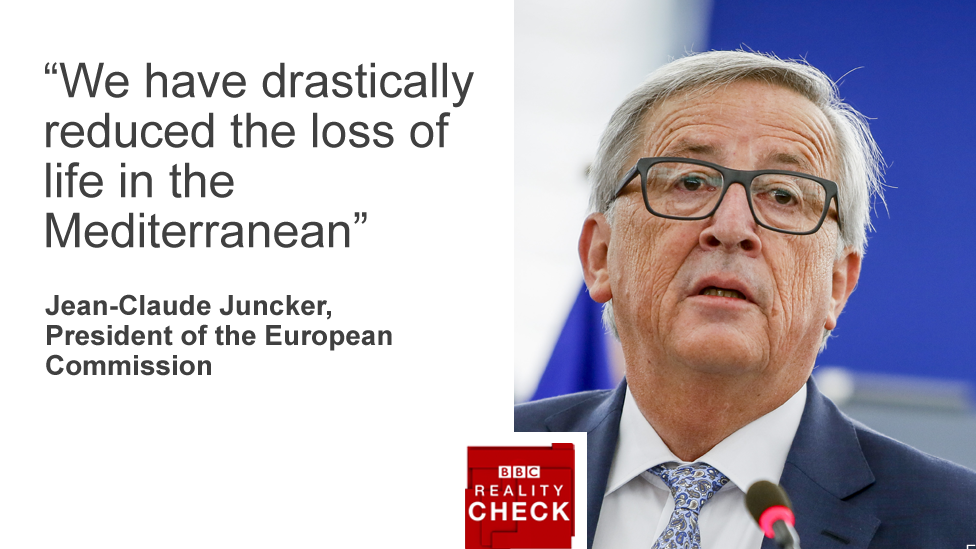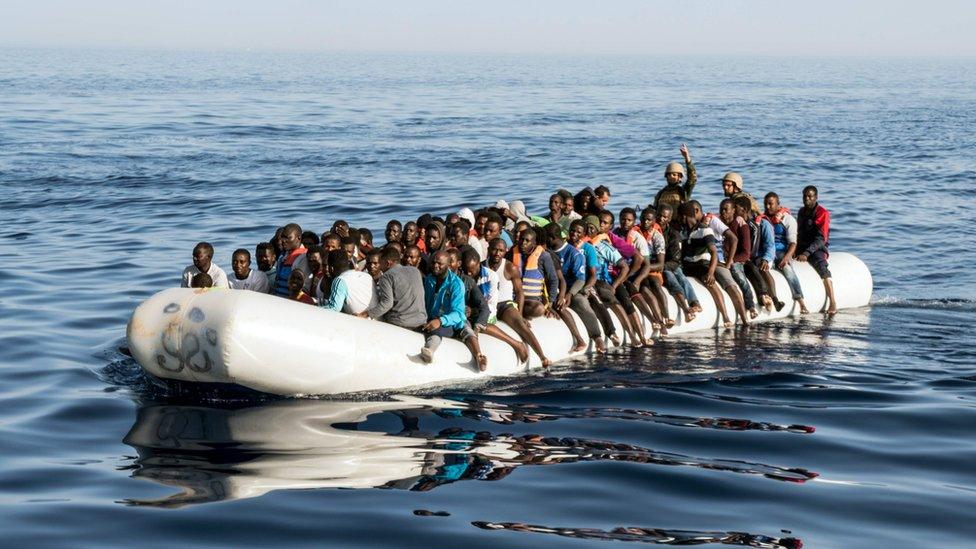Reality Check: Has the EU reduced migrant deaths?
- Published

The claim: The President of the European Commission, Jean-Claude Juncker, said: "We have drastically reduced the loss of life in the Mediterranean," in his State of the Union speech to the European Parliament.
Reality Check verdict: The estimated number of deaths has gone down this year, but for those who make the crossing the risk of dying is greater in 2017.
Is it an accurate assessment by the President of the European Commission Jean-Claude Juncker to claim that the European Union's migration policies have "drastically reduced" the number of people who drown while trying to cross the Mediterranean?
Obviously, it depends partly on how you define "drastically".
The absolute number of deaths has certainly gone down.
In 2015, according to estimates issued by the International Organisation for Migration (IOM), there were 3,771 people reported dead, or missing presumed dead, in the Mediterranean. In 2016, the number rose to 5,143. But so far this year - up to 10 September - it has fallen to 2,542.
That is still shockingly high, and Mr Juncker himself acknowledged that. "I will never accept that people are left to die at sea," he said.

EU agencies have helped train the Libyan coastguard
Fewer arrivals
But when you compare the number of deaths with the number of people who have arrived in the EU, the 2017 figures look even worse - because the number of arrivals has fallen far more sharply than the number of deaths.
In 2015, again these are IOM estimates, a total of 1,011,712 people completed what are known as irregular sea crossings to reach the EU.
That means that for every person who drowned, 268 arrived safely on European shores.
In 2016, there were 363,348 arrivals by sea - meaning that for every person who lost their life, 70 arrived safely.
And so far in 2017, 128,012 arrivals have been recorded - which means that only 50 people have managed to reach the EU for every person who has died.
So, by this reading of the figures, the situation is actually deteriorating.
Fewer people are attempting to make the journey, but for those still trying to do so the risk of dying has greatly increased.
This is despite the efforts made by European countries and non-governmental organisations to patrol the seas more effectively.

Migrant deaths in the Mediterranean
2015: 3,771
2016: 5,143
2017 so far: 2,542
Migrants who arrived in the European Union
2015: 1,011,712 (268 per death)
2016: 363,348 (70 per death)
2017 so far: 128,012 (50 per death)

What are those measures that Mr Juncker refers to? First, under the EU's Operation Sophia, there are currently four naval ships, two helicopters and three aircraft taking part in anti-migrant-smuggling patrols in the Mediterranean.
Coastguard vessels from countries such as Italy, Greece and Malta - or from the EU's Border and Coast Guard Agency, Frontex - also play a significant role.
Secondly, more people are being picked up by coastguard vessels in the territorial waters of the country from which they set out.
So far this year, for example, the IOM says 13,826 people have been intercepted by the Libyan coastguard and returned to Libyan soil.
Critics say far more needs to be done. And it is clear that the EU has been significantly more successful in reducing the number of migrant arrivals than in reducing the number of people who lose their lives attempting perilous voyages across the sea.


